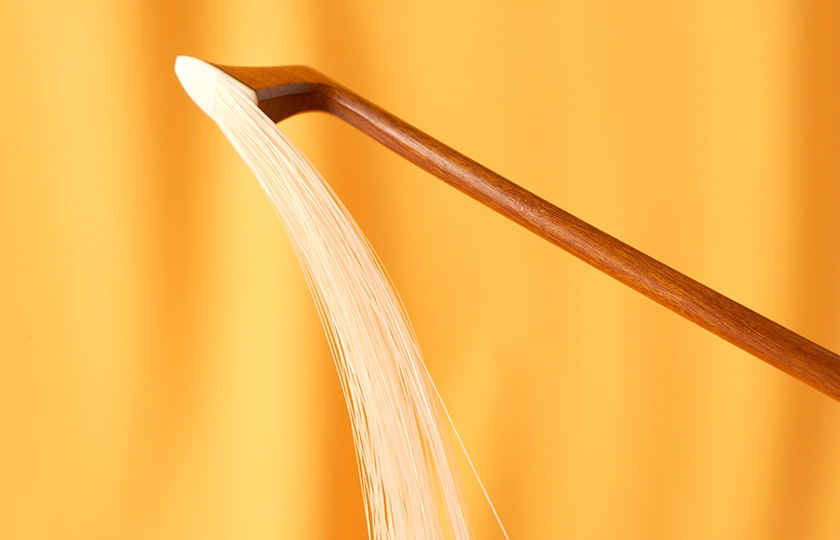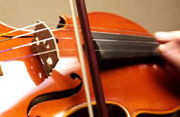The Structure of the Violin
The structure of the bow
Bow hair is made from horse hair
The bow hair is made of a hank of horsehair. A single violin bow will use between 160 and 180 individual hairs. These hairs are all attached next to each to form a ribbon. Unusually thick hairs and kinked hairs are removed so that only straight hairs are used.

Bow hair made of horsehair

The stick is made out of hardwood
Rosin is used to create friction, and thus sound
Rosin is applied to the bow hair before being used. Rosin is the hardened sap of the pine tree and comes in yellow or black cakes, which produce a white powder when rubbed. Rosin powder is sticky, which helps the bow rub the strings. Let's listen to the sound produced by a bow with rosin, and one without.

Bruch's Violin Concerto No. 1
With rosin
Without rosin
Musical Instrument Guide : Violin Contents
Origins
Structure
How to Play
How the Instrument is Made
Choosing an Instrument
Care and Maintenance
Trivia
- The f-hole used to be a C-hole or S-hole
- Why the f-hole?
- Violinists must bow to the horse
- Steel strings or gut strings? That is the question
- Is the chinrest the unsung hero of the violin?
- Most violin varnishes are also medicines
- Violin masterpieces: Solos I
- Violin masterpieces: Solos II
- Violin masterpieces: Solos III
- Violin masterpieces: Concertos I
- Violin masterpieces: Concertos II
- Viola masterpieces: Chamber music
- Viola masterpieces: Concertos
- Cello masterpieces: Concertos I
- Cello masterpieces: Concertos II
- Cello masterpieces: Solos
- Contrabass masterpieces: Concertos
- Contrabass masterpieces: Chamber music
- Orchestral masterpieces featuring the contrabass
- What do you call the part on the bow that you hold?
